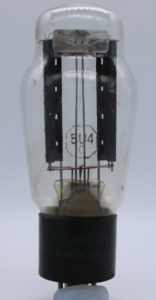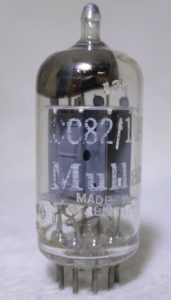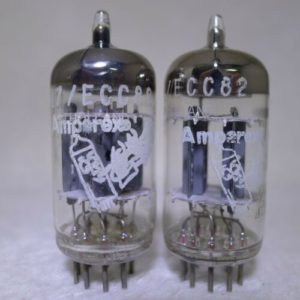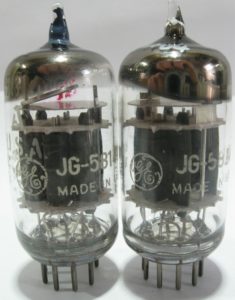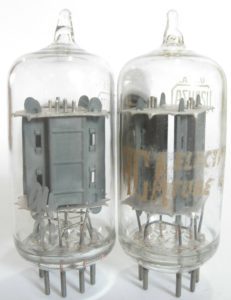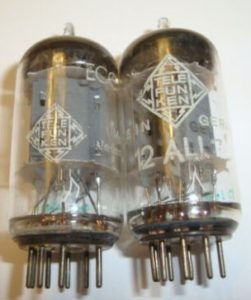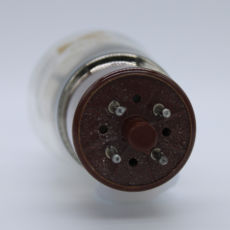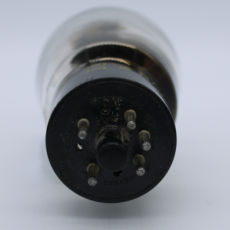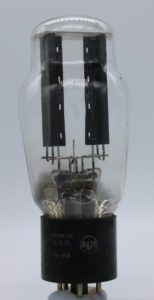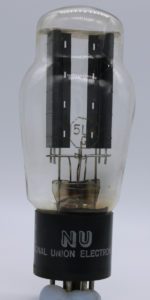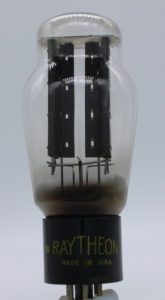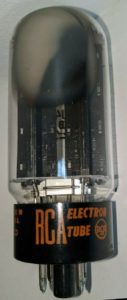Tube Rolling the Xduoo Ta-30
First off – thanks to Xtenik and Xduoo for sending this beast for review. A full review of the Ta-30 can be found here.

This article is instead aimed at what tubes work best in the Ta-30. Understanding that the Ta-30 is a departure from the budget class and a move into the mid-fi segment, the tubes discussed here are often going to be more expensive than those discussed in previous Tube Rolling installments. This is partially due to the fact that decent rectifier tubes start at about $30 and go up from there with the Holy Grail tubes (Western 422A) running into the thousands. The 12au7 pre-amp tubes can be found inexpensively but when spending $750 on the amp, it seems a poor choice to hamstring its performance by not looking at the best tubes available (within reason). For that reason, while the 12au7 discussions will overlap some, this article is likely to introduce some options that were previously not listed due to price. A $200 amp doesn’t justify a $300 pair of tubes, while something in this class just might.
The other thing to discuss is the geometry of this amp. This is a bit different than anything else in the Xduoo line in that it uses a similar geometry to the Ta-20 with a pair of 12au7 (ecc82) pre-amp tubes and a solid state output stage. The difference comes in the form of a tube rectifier. So what is it, and what does it do?
A rectifier can be thought of as a one way valve that takes AC input and converts it to DC output. Usually this transformation is accompanied by a voltage increase as well. 120V AC from the wall comes into the system where it is fed to a power transformer that steps the voltage up to 300V AC (or higher). That is then fed to the rectifier tube that converts the 300V AC input into a 450V DC output. (Actual numbers will vary by application, but in almost all cases we see wall power fed to a step up transformer, and then to a rectifier tube which handles the AC/DC conversion. This is then provided to the other system components which gives those components a large clean DC voltage to work with.
As you might have guessed, pretty much any appliance that uses DC internally and plugs into wall outlets has a rectifier somewhere in it. At one point, all rectifiers were tube based, then solid state versions began to appear and in the 1970s silicon based models made solid state rectifiers cost effective and they all but wiped out the tube rectifiers. Today the most commonly seen rectifier is the omnipresent wall-wart and tube rectifiers are seen in guitar amplifers that still use designs that predate solid state rectifiers, and in tube audio where some purists will argue that to be a true “tube” amplifier it must use tube rectification as well as signal path tubes. Others will argue that since the audio signal never passes through the rectifier, a tube amp with a solid state rectifier can still technically be called an all-tube amp as the rectifier is not a signal amplification component. In a perfect system, it would not matter whether the rectifier was solid state or tube or which design it was. Its job is to provide clean DC power and if all were capable of doing exactly the same thing none of the rest of this conversation would be needed.
Reality is, none are perfect and variations do exist in both solid state and tube models and those differences do impact system performance. Right now I hear the reader saying, “But wait a minute, you just said it wasn’t in the signal path, and then said it does effect sound quality”. Yep, I did, and yes, it does. The fact that the rectifier isn’t directly in the signal path does not mean it does not have a direct influence on things that are. So in this case the rectifiers actions are one step removed from the signal path, but very much still involved with it.
To better understand how the rectifier influences the sound, we need to look to the rest of the components.
Pretty much all tubes perform differently when fed different input voltages, so even minor variations in input voltage can result in changes to the sound. Rectifiers are spec’d with a range of output voltage so even two of the same lot of the same brand tube may have slight differences in output. If one tube is at the top end of that range and the other at the bottom, that difference may well be enough to be audible.
Even if two rectifiers have exactly the same output voltage and current under a standard load, that does not mean they will perform identically. A couple of other elements of the rectifiers design will cause audible differences. The first is the speed of the rectifier. All rectifiers do the same job, AC to DC conversion, but the speed of that conversion can vary tremendously. The faster the conversion, the more efficient the rectifier and the more articulate the resultant sound is likely to be, conversely, a slower, less efficient rectifier may produce a bit softer tone. This is due to the reaction time of the rectifier when a demand is introduced. Generally speaking, Attack is faster and cleaner with more efficient rectifiers, some slower models may seem more forgiving and are popular in guitar amps for that reason.
The other factor also centers on demand, and that is the recovery time of the rectifier when a large demand is placed. All tube rectifiers will sag under heavy demand. This sag is caused by the fact that the tube cannot immediately service the demand and it takes a few milliseconds for the tube to react to that request and provide the needed current. This is usually seen in the audio stream as a slight blunting of the attack and a bit of bloom as the recovery occurs and is often referred to as compression.
Since each rectifier has a different recovery time, and each circuit presents different demands, matching the rectifier carefully can change the sound pretty dramatically. For example, a highly efficient rectifier used in a circuit that never demands enough current to cause sag will result in fast attack, articulate sound, and very little compression. (This is why solid state rectifiers are popular, they are the model of efficiency and can provide huge power if configured properly). Swapping in a less efficient rectifier will result in a blunting of the attack and a bit of bloom in the notes that give the amp a more forgiving sound, but at the expense of a few of the details.
To try and see what could be done with the Ta-30 by trading tubes, I gathered a group of rectifier tubes ranging from the original Chinese 5z3P, to the much touted Sylvania 5931 milspec, and including, RCA, GE, CBS, National Union, and Raytheon made 5u4g models as well as RCA, GE, And current production Electro-Harmonix 5u4gb tubes. For the pre-amp, I pulled out my 12au7 Telefunken smooth plates, Mullard long plates, RCA black plates and clear tops, Brimar CV491, Amperex bugle boy, and GE 5-star triple mica 5814s. These are all top performers so I was hoping to find at least one that was a substantial improvement over the stock tubes.
Lets talk through the pre-amp tubes first as I needed to settle on a single pair of tubes in the pre-amp to then test the rectifier tubes to see what impact they had on the overall. Using the USB input on the Ta-30 to do all my listening tests, I found the DAC leans slightly to the cooler side which is not at all atypical for ESS models. The choice of pre-amp tube could either accentuate this, or bring a bit more warmth and I found my personal preference was to bring a bit more warmth and body to the sound when I could without getting overly syrupy in the process.
| Brand | Type | Photo | Notes |
|---|---|---|---|
| Mullard | 12AU7A | The British made Mullard 12au7 has long had a reputation for being a warm sounding tube with excellent mids and that proved well founded when used in the Ta-30. In this application, the Mullard tubes had good end-to-end extension, great detail, and added a bit of needed warmth to give the Ta-30 a very detailed but still fluid sound. These were my favorite of those tested as they had the best synergy with the Ta-30. I've preferred the Telefunken over the Mullard in other Xduoo amps, so this time the Mullard got its revenge and took the top spot. | |
| Brimar | CV491 | The Brimar tubes have almost the warmth of the Mullards with excellent extension and good balance. I think they lack just a hint of detail in the mids that is present in the Mullards and thus these place 2nd on my list when used in the Ta-30. Still extremely good, but just enough behind the Mullards to be noticeable. | |
| Amperex | 12AU7A Bugle Boy | The Amperex were next in line taking the 3rd place spot. Again, they add a bit of warmth to the sound and still maintain good clarity. What kept the Amperex out of the top two spots was slightly less extension at the top end than either the Brimar or Mullard. These are a very solid option and the differences between these and the top two spots took a lot of listening to really nail down. Had I not had the other two in my collection, I could have been very happy with the Amperex tubes in the Ta-30. | |
| I quit trying to rank my choices below this point. All have something that keeps them out of the top spot for me, and it became increasingly difficult to determine an exact order among them. | |||
| GE 5-Star | 5814 Triple-Mica D-Getter | The pair I used were early 5-Star models with triple mica supports so later models may differ. These had good low end and a well extended top end that came across as slightly bright. Much like the Telefunken, these were very clean but lacked a touch of warmth. These came off feeling slightly thin and dry as a result and lacked the overall musicality of the warmer tubes in the test. |
|
| RCA | 12AU7 Black Plate | The black plate RCA is considered by many to be the best American made 12au7 due to its excellent manners. They lived up to that with good extension all the way through the range and a bit of extra energy in the mids that was welcomed. The top end has good extension, but fell just short of those that placed in top three in detail, If I had to pick a 4th place, this was probably it. |
|
| RCA | 12AU7 Clear Top Gray Plate | The clear-top RCA is now becoming as hard to find as the black plate. The Clear top had good extension and a very well balanced signature, but lacked the slight push in the mids and a touch of the warmth the black plate brought to the sound. These would be a top choice for those wanting a bit less warmth without getting into the bright top end of the Telefunken (in this application) but fall short of the top performers for my tastes. | |
| Telefunken | 12AU7 Ribbed Plate | The Telefunken tubes have a great reputation for good extension and balance without getting overly syrupy and they behave as advertised in the Ta-30. Those looking for an analytical sound may well prefer them, but for me, they lacked a touch of warmth and came across as a touch thin and a touch bright. Detail is extremely good and imaging and stage were both impressive. What kept these out of the top three spots was the fact that they quickly were fatiguing to my ear. | |
| Telefunken | ECC82 Smooth Plate | The Telefunken tube has always had a reputation for being a very clean sounding tube with great extension, and they lived up to that in the Ta-30, but with it having a dac that leans to the thinner side, they came across as rather analytical and slightly less musical than the Mullard or Brimar versions in this particular application. They sound slightly thinner throughout the lower range and lower mids, and a touch bright above that. This is a case of a great tube in some applications being only average in others. Save the Telefunken for the Ta-03s where it really shines. |
Now that I’d settled on the Mullard and Brimar as the best options for the pre-amp tubes, I was ready to move forward with testing rectifier tubes. I used the Mullard long-plates as the pre-amp tubes for all rectifier comparisons.
Before listing tubes and notes, I think some discussion of tube designations is in order. The tube provided with the Ta-30 is labeled 5Z3p. Original 5Z3 tubes are 4 pin based while their newer replacements the 5u4 and 5u4g are octal. The Chinese tube is for all intents a 5u4g was it has the octal base and electronic specs all line up exactly with the 5u4g. The only difference in the 5z3p and 5u4g tubes is the 5th pin often seen on the 5u4g base as shown in the photos below. Reality is the pin in position 1 on the 5u4g tubes is not connected and the live pins are the same for both the 4 pin 5z3p and the 5 pin 5u4g with pins 2 and 8 going to filament and pins 4 and 6 going to the plates. So even with a slightly different look, the 5Z3p and 5u4g are interchangeable.
The other tube that is usable is a newer version of the 5u4g called the 5u4gb. Differences in the original and the b are both cosmetic and functional as the 5u4g used an ST shaped (coke bottle) shape while the b uses a more standard straight wall to conserve space and the b series improved maximum plate current to 1 amp vs the original spec of 675mA. Voltage drop is also improved as the original 5u4g was spec’d at 58Volts using a 225mA current on the plates while the newer b series only drops 44Volts using the same current. In layman’s terms, any system designed for the 5u4g is safe for the 5u4gb, but systems designed for the 5u4gb could overtax a 5u4g if designed to drive the b series tubes to near maximum. In our use case, both are usable and I used a couple 5u4gb tubes in my testing alongside the original variety.
There are several other similar tubes that are often listed as potential substitutes for the 5u4g but many have different plate currents, maximum Voltages, etc… so switching between these is less straight forward and with the 5u4g and gb versions being among the most readily available rectifier tubes available, I see little reason to risk overloading the circuit by using a different tube.
So, compared to the stock Chinese made 5Z3p, did any of my motley collection of rectifiers make an audible difference?
| Brand | Type | Photo | Notes |
|---|---|---|---|
| Xduoo | 5Z3P | Overall a very good looking tube and seems quite well put together. Sort of a hybrid between the 5u4 and the 5Z3 as it has an octal base (5u4) but the internals are very similar to the older 5Z3 design. Power is good but sag does become evident at times as repeated heavy hits can cause some audible slowing of the attack and later hits can be less impactful due to slow recovery. Overall, a more fluid sound but attack is a bit blunted compared to some others, and sag is evident sooner than some of the other options. | |
| RCA | 5U4G | Slightly faster recovery than the stock tube, but roughly equal in sag and attack can be slightly blunted as a result. Overall, not a great improvement but at the cost of $10-15 for new old stock, it would be a good choice when time comes for a replacement tube. | |
| GE | 5U4G | Very similar to RCA in that recovery is better than the stock tube, but sag is about equal so attack is still a bit softened during heavy passages. Again not a bad replacement if looking to replace a broken or worn out tube, but not markedly improved over the factory supplied tube either. | |
| CBS | 5U4G | This was the surprise of the bunch as both sag and recovery were markedly better than most of the other 5u4g tubes tested. It still shows sag when hit hard but sags less than most of the others in the test and recovers quickly. This was the best of the lot for 5u4g tubes in the Ta-30. | |
| National Union | 5U4G | Sag was even more pronounced than stock tube and a bit slower in recovering as well. This is a tube to avoid in this configuration as it does nothing to improve on the stock sound and actually makes it worse in most measures. The tube I used for testing tests as new old stock when placed on the Hickok 539b tester so it is not a matter of a near death tube, it simply doesn't perform as well as some others. | |
| Raytheon | 5U4G | The Raytheon tube was different than most as the sag was about equal with the stock tube, but the recovery was markedly better so the overall impact to the sound was reduced comparatively. When heavy hits did come, you could hear a slight dip, then a quick return to normal. I would rank this is the 2nd best in the group of 5u4g tubes as it made an improvement in the sound with a bit more edge and definition during heavy passages. | |
| Sylvania | 5U4G | The Sylvania made 5u4g did nothing to differentiate itself from the stock tube, the GE, or the RCA, and all can be thought of as equals when used in the Ta-30. Sag and recovery are not markedly better or worse than the stock. | |
| RCA | 5U4GB | All of the 5u4gb tubes were a marked improvement in both sag and recovery time compared to their older counterparts so any of the listed 5u4gb tubes will be an improvement over stock. Having said that, the RCA was 2nd only to the 5931 and then not by a large margin. This can be thought of as the best from a price/performance ratio as the RCA can often be found in the $10 range while the 5931 is usually closer to $40. | |
| GE | 5U4GB | As previously mentioned, much lower sag than the 5u4g models and quicker recovery as a result. The GE was a solid improvement over all of the 5u4g tubes, but not quite as good as the RCA or Sylvania made GB models as it tended to be slightly grainy during recovery. | |
| Electro-Harmonix | 5U4GB | I had to put at least one Russian made tube in the mix, and the EH didn't disappoint. It was a clear improvement over stock in both sag and recovery time and with prices for new EH tubes around $15 on Amazon it makes a good budget choice and is very close to the RCA made tube in sound quality. My personal rankings pencil the EH tube in between the GE and the RCA 5u4gb tubes. | |
| JAN 5931 (Sylvania) | 5931 / 5U4GB | My favorite of the lot, fast recovery and less sag evident than any other tube in the test. This tube allows the Ta-30 to have enough edge to be detailed with enough tube contribution to sound fluid and smooth. These are a bit more expensive than some others in the test, but at $40 for a new old stock example and a 10,000 hour rated service life, it might be the last rectifier tube you ever have to buy for the Ta-30. |
So my winners of best tubes in the Ta-30 go to the British made Mullard Long Plate 12au7s paired with the Sylvania 5931 rectifier. Second place goes to the Brimar CV491 pre-amp tubes paired with the RCA 5u4gb, and my budget pick would be an all RCA affair with black plate 12au7s in the pre-amp and the 5u4gb in the rectifier socket. I had a ton of fun doing the listening for this article and hope you have enjoyed reading it. Thanks again to Xduoo and Xtenik for providing the Ta-30 for my little experiments.



